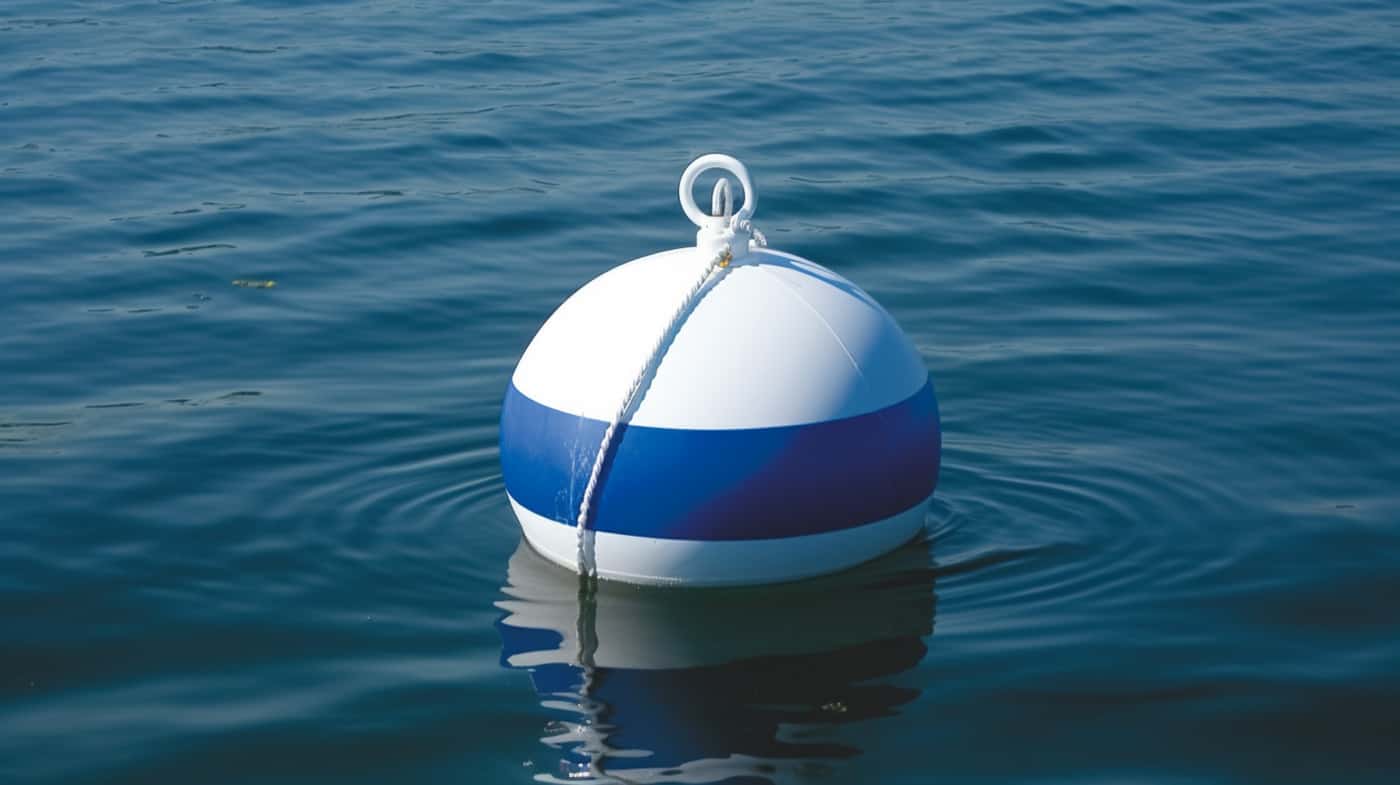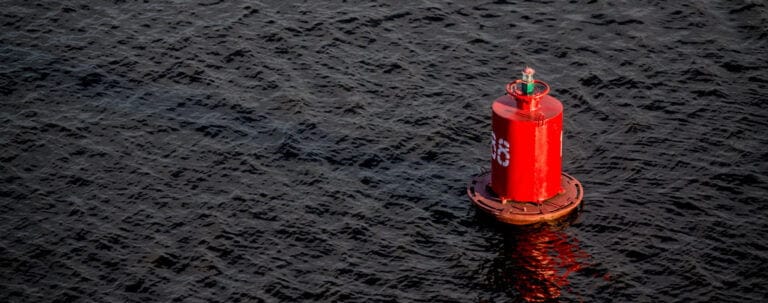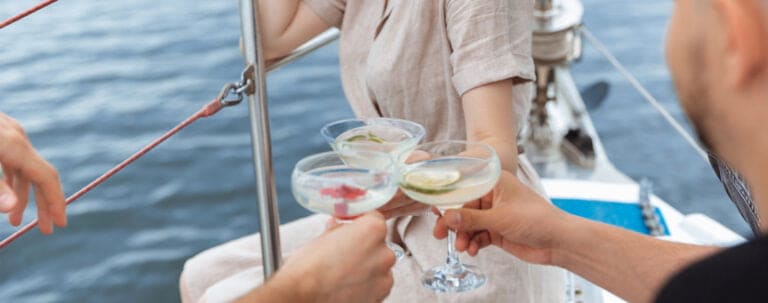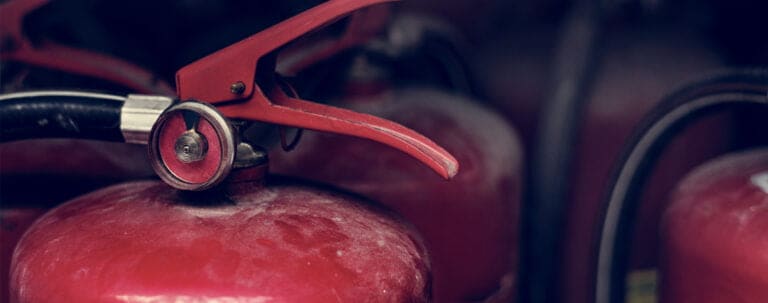A buoy is a type of float that has been anchored to a specific location in the sea.
They are used as a way to navigate the oceans, as a mooring point, and to alert sea voyagers of hazards.
Every buoy and navigational light in the sea comes under the jurisdiction of the IALA (International Association of Lighthouse Authorities).
This means that they are globally recognizable and can be relied upon to withstand any weather conditions.
There are 2 main navigational systems – IALA A and B. IALA system A applies to Europe, the British Isles, Africa, Asia, Australia, New Zealand, and the Middle East.
IALA system B covers all of the Americas (North, Central, and South), the Philippines, Korea, and Japan.
In system A the color red symbolizes the port side and green symbolizes the starboard side.
In system B, the colors and their meanings are reversed.
These markers are also referred to as cans or lateral channel marks.
They flash at a variety of rhythms and are located on either side of a channel dictated for your boat to travel between.
Anchorage buoy
This is a type of navigational aid that marks areas suitable for boats to drop anchor (see which anchor is best for your boat here).
It marks the outer limits of the designated anchorage areas.
You should check these markers against a water depth chart to ensure the water is deep enough to prevent running aground.
These buoys are yellow and have a black anchor painted onto the side.
If there is a light, it will be yellow and flash once per 4 seconds.
Cardinal buoys
These buoys are colored black and yellow and are situated at North, South, East, and West.
Their primary function is to point out wherein the water is safe to sail by showing where areas of deeper water are located.
The North cardinal buoy indicates that safe water is to the North of the buoy, and the same principle applies to the others.
The North buoy will be black at the top and yellow on the bottom.
The light will flash in a continuous and quick pattern.
The South buoy is yellow on the top and black on the bottom.
The white light flashes with 6 short bursts and 1 long one.
The East buoy is black with a yellow stripe, and the West buoy is yellow with a black stripe.
The East light will flash 3 times in quick succession.
The West light will flash 9 times quickly.
Cautionary buoy
This is another large yellow buoy.
This dictates an area where seafarers should be wary of danger.
These dangers can include, but are not limited to: raceways, firing ranges, underwater channels, and areas where traffic separates and no safe through-channel exists.
Control buoy
These are white buoys with an orange circle on either side and 2 horizontal orange bands.
These buoys exist to show areas where you cannot sail in a boat.
There will likely be symbols or figures painted in black inside the circles.
This will alert the seafarer as to what they cannot do.
They are commonly used to show speed and wash restrictions.
If there is a light on the buoy, it will be yellow and flash at a frequency of once per 4 seconds.
Diving buoy
Diving buoys have a diver-down flag mounted on top of them.
This is a red flag with a white diagonal stripe and indicates that there are divers underneath the water’s surface.
If you see a ship flying this flag, you should steer around it, giving a large berth.
Hazard buoy
These are white buoys with an orange diamond on either side and 2 horizontal orange stripes painted onto the exterior.
They are there to alert sailors of rocks, shoal, and other unexpected hazards.
Information buoy
Information buoys are white and have a large orange square painted onto both sides.
There will be information either in words or symbols inside this square.
These buoys give seafarers any relevant information.
They will also have an orange stripe both above and below the squares.
Keep out buoy
These buoys are used to tell boats to keep out of specific areas.
They are white with an orange diamond filled with a cross on either side.
These buoys also have 2 horizontal orange lines painted on them.
Swimming buoy
These buoys, as the name suggests, are used to mark the limits of a designated swimming area within the sea.
They are white and sometimes contain a yellow light that flashes once per 4 seconds.
Isolated danger mark
These markers can be beacons, concrete pillars, or buoys.
They are painted to resemble black and red hoops and have 2 black balls on the top.
If there are lights present, they will be white and flash in groups of 2.
They are used to mark the position of a small hazard in the open water and can be safely passed on either side.
Safe water mark
This is also referred to as a sea buoy or a fairway buoy.
They are painted with vertical red and white stripes and have a solitary ball mounted on the top.
Their lights will flash once in a long and sustained manner, every 10 seconds.
They are commonly found in deep and safe water, close to the end of fairways and harbor approach channels.
They are often referred to as the point of departure, that marks the shift from navigating the open water to pilotage.
White Buoy With A Blue Band – Summary
A white buoy with a horizontal blue band is a mooring buoy.
You are allowed to anchor your boat to this buoy in public water, unlike with any other buoy or navigational aid.
You will commonly find these types of buoys in a marina.
You may also see mooring buoys which are white with an orange stripe.
The same rules apply to them.




